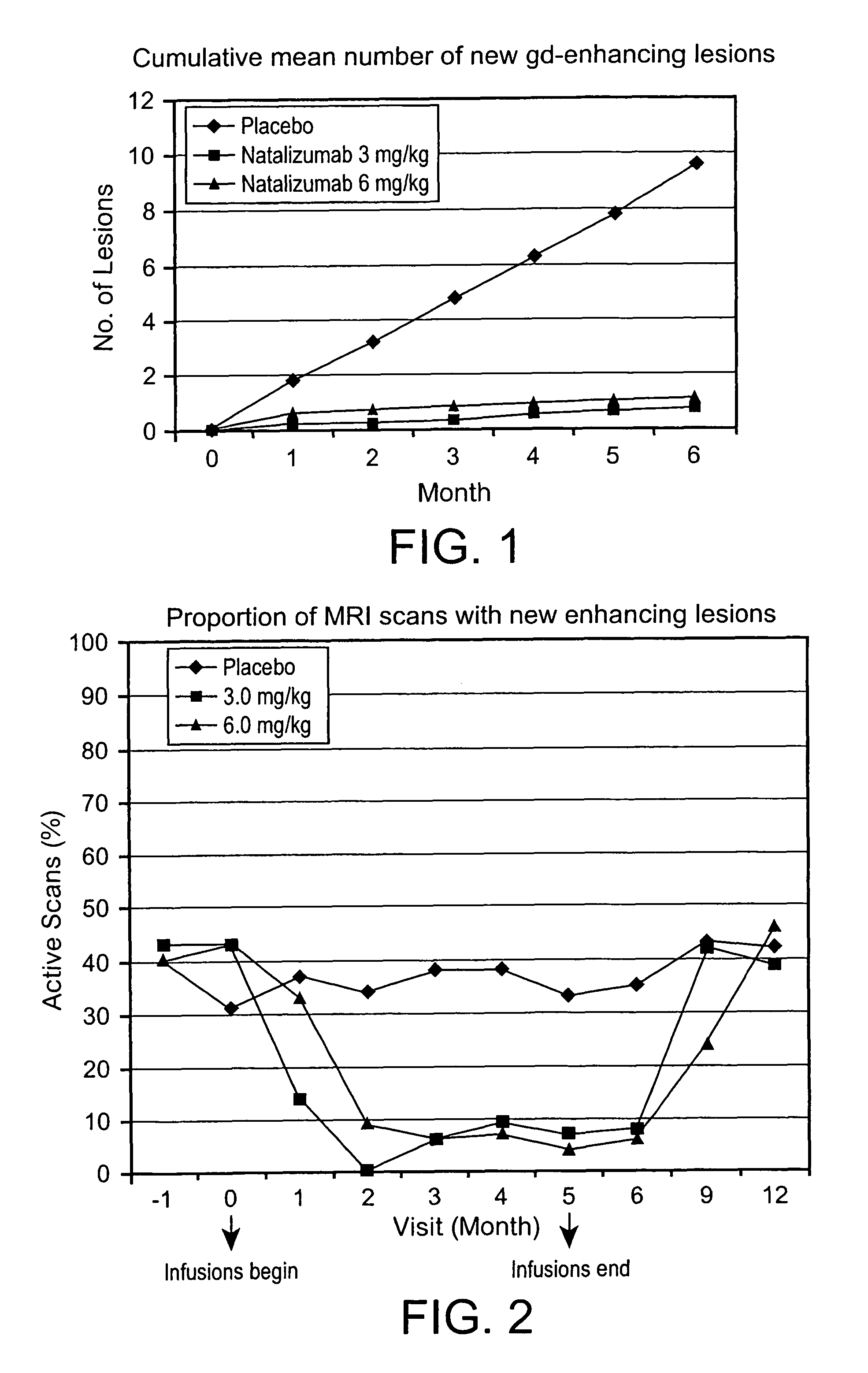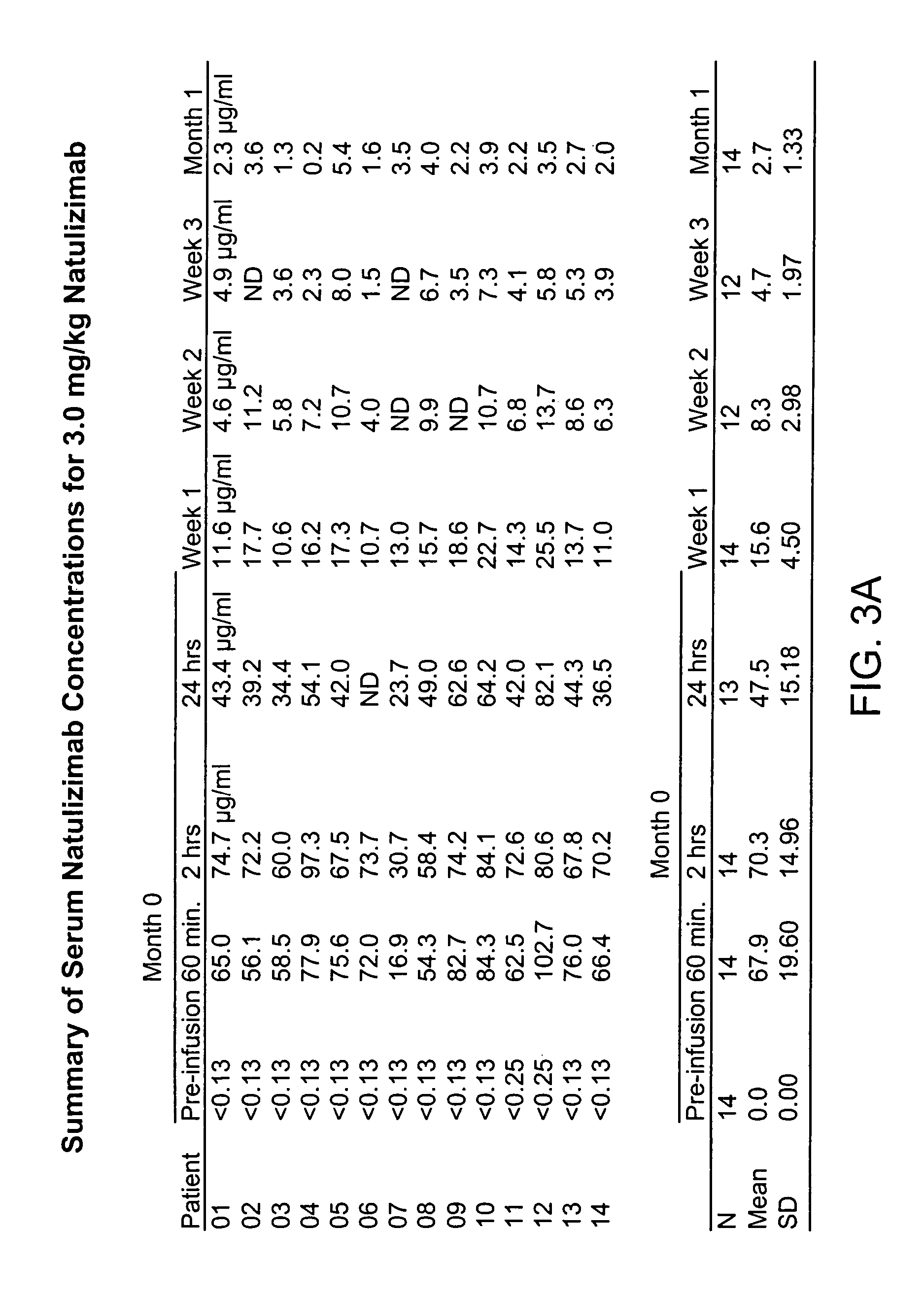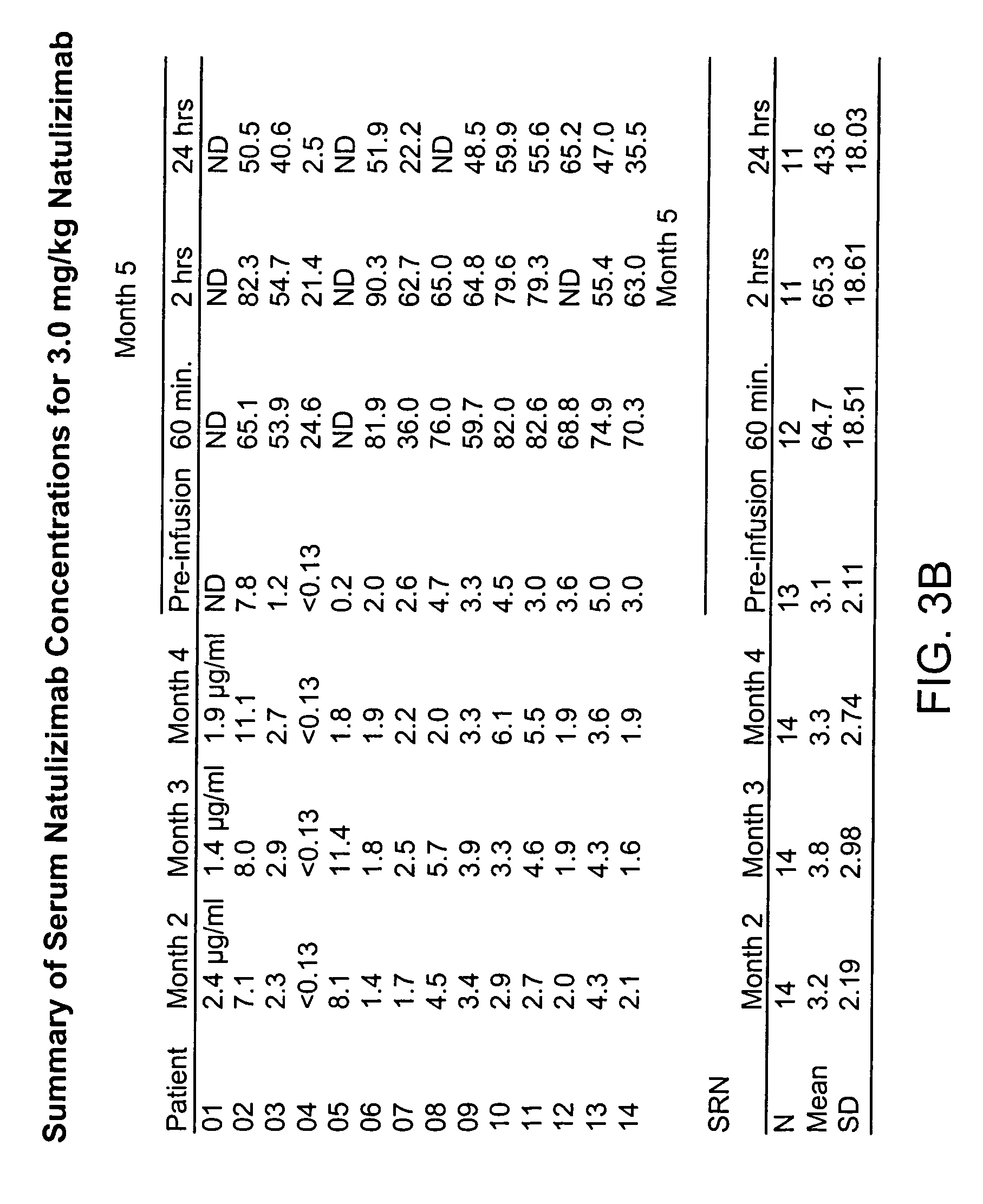Administration of agents for the treatment of inflammation
a technology of inflammation and agents, applied in the field of inflammation-related agents, can solve the problems of slow onset of action of agents, serious or fatal damage, and potentially serious side effects of agents, and achieve the effect of low toxicity and well tolerated
- Summary
- Abstract
- Description
- Claims
- Application Information
AI Technical Summary
Benefits of technology
Problems solved by technology
Method used
Image
Examples
example 1
Controlled Trial of Natalizumab in Relapsing Multiple Sclerosis
Patient Population
[0149]Twenty-six clinical centers in the United States, Canada, and the United Kingdom enrolled 213 patients from September 1999 until May 2000. The institutional review board or central and local ethics committee approved the protocol. All patients gave written informed consent. Study oversight was provided by an independent safety data monitoring committee.
[0150]Eligible subjects were required to be age 18 through 65 years, with Poser criteria defined clinically or laboratory supported definite MS, either relapsing-remitting or secondary progressive, (Poser et al., 1983 Ann. Neurol. 13: 227-31; Lublin et al., 1996 Neurology 46: 907-11), a history of at least two relapses within the previous two years, a base-line Kurtzke Expanded Disability Status Score (EDSS) (Kurtzke, 1983 Neurology 33: 1444-52) between 2 and 6.5, and a minimum of three lesions on T2-weighted brain MRI. Patients were excluded if the...
example 2
Controlled Trial of Natalizumabin Crohn's Disease
Methods
[0192]In a double-blind, placebo-controlled trial, 248 patients with moderate to severely active Crohn's disease (CD) were randomized to receive two infusions of placebo or infusion of natalizumab at 3 mg / kg followed by placebo; or two infusions of natalizumab at 3 mg / kg or 6 mg / kg, at a 4-week interval. Outcome measures included the Crohn's Disease Activity Index (CDAI), health-related quality of life (QOL), and serum C-reactive protein levels.
[0193]Natalizumab increased the rates of clinical remission and clinical response, and improved QOL in patients with active CD, while demonstrating a safety profile acceptable for treatment of this disease.
Patient Population
[0194]After receiving approval from the local ethics committee, each center screened male and female patients of at least 18 years of age who had clinical evidence of moderate to severely active CD defined as a CDAI of at least 220 but less than or equal to 450. Of 31...
example 3
The Effect of Natalizumab on Circulating Activated Leucocytes in Active Inflammatory Bowel Disease
[0221]The trafficking of leukocyte subsets is involved in the pathogenesis of inflammatory bowel disease (IBD). Because alpha-4 integrins are key mediators of leukocyte migration across the vascular endothelium, being that they are expressed on all leukocytes except neutrophils, the effects of a single 3 mg / kg natalizumab (Antegren®) infusion on basic circulating leukocyte subsets, natural killer (NK) cells and activated T cells in active inflammatory bowel disease patients (IBD). It had also previously been shown that a single 3 mg / kg infusion of natalizumab produced a sustained rise in circulating peripheral blood leucocytes in animals and healthy volunteers (“A six-month weekly intravenous toxicity study with Antegren™ in cynomolgous monkeys with a six-week recovery,”Athena Report 1998, No. 723-013-098). However, it was unknown whether natalizumab could have differential effects on l...
PUM
| Property | Measurement | Unit |
|---|---|---|
| pH | aaaaa | aaaaa |
| pH | aaaaa | aaaaa |
| pH | aaaaa | aaaaa |
Abstract
Description
Claims
Application Information
 Login to view more
Login to view more - R&D Engineer
- R&D Manager
- IP Professional
- Industry Leading Data Capabilities
- Powerful AI technology
- Patent DNA Extraction
Browse by: Latest US Patents, China's latest patents, Technical Efficacy Thesaurus, Application Domain, Technology Topic.
© 2024 PatSnap. All rights reserved.Legal|Privacy policy|Modern Slavery Act Transparency Statement|Sitemap



